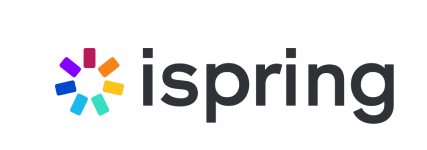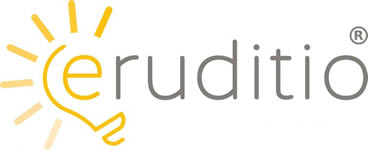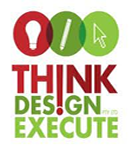
Unleashing Possibilities
Design Workshops
Host design thinking workshops to foster creativity and problem-solving.
Explore Benefits arrow_forward
Collaborating Beyond Boundaries
Cross-Functional Teams
Encourage collaboration among diverse teams to drive innovation.
Explore Benefits arrow_forward
Designing with user in Mind
User-Centric Design
Put the end-user at the center of the design process.
Explore Benefits arrow_forward
Turning Ideas into Reality
Rapid Prototyping
Build prototypes quickly to test ideas and gather feedback.
Explore Benefits arrow_forward
Pioneering Progress
Innovation Incubators
Create spaces or programs for employees to explore innovative ideas.
Explore Benefits arrow_forward0{{current_slide_index}} | 0{{total_slide_count}}
5 Design Thinking & Innovation Solutions
Design Workshops
Cross-Functional Teams
User-Centric Design
Rapid Prototyping
Innovation Incubators
Design Thinking & Innovation
solutions’ Benefits
-
- Creative Collaboration: Design workshops bring together cross-functional teams and stakeholders to collaborate, brainstorm, and share ideas, fostering a creative and inclusive environment.
- Problem Solving: They help identify and address design challenges, ensuring that the final product or solution meets user needs and business goals.
- Efficient Decision-Making: Workshops facilitate rapid decision-making, allowing teams to prioritize design elements, features, and strategies effectively.
- User-Centered Design: By involving end-users in the design process, workshops help create products and solutions that align closely with user needs and expectations.
- Iterative Improvement: Regular workshops promote ongoing design iterations, ensuring that the design continually evolves and improves.
- Communication and Alignment: They promote better communication and alignment among team members and stakeholders, reducing misunderstandings and streamlining the design process.
- Reduced Rework: By catching design issues early and iterating through workshops, businesses can save time and resources that would otherwise be spent on rework.
- Innovation and Ideation: Design workshops encourage creative thinking and the exploration of new ideas, fostering innovation within the organization.
- Empowerment: Team members and stakeholders feel more involved and empowered in the design process, leading to a sense of ownership and commitment.
- Faster Time to Market: Efficient design workshops can expedite the design and development process, reducing time-to-market for new products or features.
- Diverse Expertise: Cross-functional teams bring together individuals with diverse skill sets, backgrounds, and knowledge, which can lead to a more comprehensive and innovative solution. Different perspectives can help identify unique approaches to solving problems.
- Faster Problem-Solving: With a variety of expertise at their disposal, cross-functional teams can often address complex issues more efficiently. They can quickly adapt and respond to changing circumstances, making them well-suited for dynamic problem-solving.
- Improved Decision-Making: The inclusion of multiple viewpoints and skill sets in decision-making processes can lead to well-informed and balanced choices. This reduces the risk of biased or one-sided decisions and enhances the overall quality of solutions.
- Enhanced Creativity: Interactions among team members from different departments or backgrounds can foster creativity and brainstorming. This creativity can lead to innovative solutions that may not be apparent in traditional, departmental settings.
- Better Accountability: Cross-functional teams often have a clearer sense of shared responsibility for the success of a project or solution. Team members are more likely to be engaged and accountable, leading to improved project management and outcomes.
- Knowledge Sharing: Collaboration within cross-functional teams encourages the exchange of knowledge and expertise, allowing team members to learn from each other and acquire new skills, which can be valuable in the long run.
- Flexibility and Adaptability: Cross-functional teams are well-positioned to adapt to changing circumstances and evolving project requirements. This agility is essential for addressing complex and dynamic challenges effectively.
- Higher Quality Solutions: With diverse input, robust problem-solving processes, and efficient decision-making, cross-functional teams often produce higher-quality solutions that address the underlying issues more comprehensively.
- Improved User Satisfaction: By prioritizing the user’s needs and preferences, UCD solutions lead to products and services that are more user-friendly and enjoyable to use, ultimately increasing user satisfaction.
- Enhanced Usability: User-Centric Design places a strong emphasis on usability testing and feedback, resulting in products that are easier to navigate and understand, reducing user errors and frustration.
- Increased Adoption and Retention: When users find a product or service easy to use and relevant to their needs, they are more likely to adopt it and continue using it over time.
- Reduced Support and Training Costs: UCD solutions reduce the need for extensive customer support and training, as the design itself is intuitive and user-friendly, saving both time and resources.
- Competitive Advantage: Businesses that prioritize UCD gain a competitive edge by delivering superior user experiences, which can lead to increased customer loyalty and market differentiation.
- Better Accessibility: User-Centric Design often incorporates accessibility features, making products and services more inclusive and accommodating for users with disabilities.
- Faster Time-to-Market: Iterative UCD processes can help identify and address issues early in the design and development stages, potentially accelerating the time it takes to bring a product to market.
- Cost Savings in the Long Run: Addressing user needs and preferences early in the design process helps to avoid costly redesigns and updates after launch, saving both time and money.
- Valuable User Insights: The UCD process generates valuable user insights and feedback that can inform future product improvements and innovation.
- Positive Brand Perception: User-Centric Design demonstrates a commitment to customer satisfaction and a user-focused approach, which can enhance a company’s reputation and brand image.
- Faster Product Development: Rapid Prototyping enables quick iteration and testing of design concepts, accelerating the product development process.
- Cost Savings: It reduces the need for expensive tooling and manufacturing adjustments, saving on production costs.
- Improved Design Validation: Prototypes allow for real-world testing and validation of product designs, leading to better final product quality.
- Enhanced Communication: Prototypes help in communicating design ideas effectively with stakeholders and clients.
- Risk Reduction: Identifying issues early in the design phase minimizes the risk of costly errors in later stages of development.
- Customization: Rapid Prototyping enables the creation of customized and personalized products for specific customer needs.
- Competitive Advantage: Faster time-to-market and improved product quality can give a competitive edge in the market.
- Innovation and Creativity: It encourages innovation and experimentation by providing a quick way to explore design possibilities.
- User Feedback: Prototypes can be tested with users, collecting valuable feedback to refine product features.
- Sustainability: Reducing material waste and energy consumption in the prototyping process aligns with sustainability goals.
- Idea Generation: They provide a structured environment for employees to brainstorm and generate innovative ideas, helping to uncover new opportunities.
- Collaboration: Incubators promote collaboration among diverse teams, encouraging the exchange of ideas and cross-functional problem-solving.
- Risk Mitigation: By allowing for experimentation in a controlled setting, incubators help identify and address potential challenges and risks early in the innovation process.
- Speed to Market: They accelerate the development and launch of new products, services, or processes, enabling businesses to stay competitive and adapt to changing market conditions.
- Talent Development: Incubators attract and nurture creative talent, helping employees grow their skills and contribute to the organization’s success.
- Cost Efficiency: They optimize resource allocation, ensuring that innovation projects receive the necessary support without diverting excessive resources from core operations.
- Market Insights: Incubators often involve customer feedback and market research, providing valuable insights that inform product or service development.
- Competitive Advantage: By consistently fostering innovation, organizations can gain a competitive edge and differentiate themselves in the marketplace.
- Culture of Innovation: Incubators help instill a culture of continuous innovation, making it a core part of the company’s DNA.
- Return on Investment: Successful innovation incubators can lead to significant ROI through the development of profitable new offerings and increased market share.






Stay In Touch